Necklace Of Harmony – Powerful Ill-Fated Piece Of Jewelry With Curse
A. Sutherland - AncientPages.com - Among the fabled objects in Greek mythology, a precious piece of jewelry is known to bring misfortune to all its owners or wearers. This mysterious object, made of gold and in the shape of two serpents adorned with precious jewels, is known as the Necklace of Harmony'.
Grotto (far left) and a statue of Harmonia in the Harmony Society gardens in Old Economy Village, Pennsylvania. Image credit: Lee Paxton - CC BY-SA 4.0
Tradition has it the Necklace brought a series of problems to people in any way related to it.
These people - primarily queens and princesses - represented the House of Thebes, which was thought to be the birthplace of a very significant member of the Greek pantheon.
The Necklace, which played an essential role in the epic known as the Theban cycle, was created by the will of god Hephaistos, who believed he had a right and a good reason to do it. Hephaistos learned that his legitimate wife, Aphrodite had a love affair with Ares, the god of war
This love affair was commonly known on Olympus and created 'some' embarrassment and made Hephaistos unhappy and angry. He sought revenge for Aphrodite's infidelity by dooming any lineage of children resulting from the affair she had with Ares.
One of Ares' children with Aphrodite was Harmony (Harmonia, Roman counterpart, Discordia), the goddess of harmony and concord. The girl grew up and was later promised to Cadmus of Thebes, Cadmus of Thebes, who, according to Greek myths, was a brother of Europe, ancestor of Oedipus, and the founder of Thebes. Cadmus was also a Phoenician prince.
Harmony is not widely known as other divinities in Greek mythology. Still, her popularity is closely related to an ancient myth about the unfortunate Necklace she received on her wedding day.
Harmony and Cadmus's royal engagement announcement gave Hephaistos an excellent opportunity to take revenge for his humiliations. Legend has it that during the wedding ceremony, Cadmus gave harmony a robe and a necklace (commonly known as the Necklace of Harmonia) which he had received either from Hephaestus or Europa.
Polynices giving Eriphyle the necklace of Harmonia. Attic red-figure oenochoe, ca. 450–440 BC. Found in Italy. Credit: Marie-Lan Nguyen - Public Domain
Cadmus did not know that the curse was still hanging over this piece of jewelry and the royalties of the House of Thebes. The god Hephaestus still remembered his wife's betrayal and was determined to punish all her descendants with misfortune and tragedies, so it happened.
A Roman poet Hyginus (c. 64 BC–17 AD), gives another version of the gifts. According to him, it was a mysterious "dipped in crime" robe that brought misfortune to harmony's descendants, not the Necklace. This fatal gift was given to Harmony by Hephaistos and Hera, but in another version, "Athena gave Harmonia a golden robe that endowed the wearer with dignity; during the ceremony." 1
The Necklace then caused further accidents, scandals, and murders.
Harmonia and her husband were turned into serpents. Later, Zeus sent them to dwell among the happy immortals, either to the paradise in the Elysian Fields or the Islands of the Blest.
Next in line was the daughter of Harmony, Semele, who inherited the Necklace. She had no luck with it, either, because the ill-fated 'treasure destroyed Semele. Wearing a necklace one day, Semele, Semele came in conflict with the goddess Hera, wife of Zeus, who wanted Semele to reveal her lover. However, it was very embarrassing for the young woman because this lover was no other than Zeus in disguise. Semele foolishly demanded that Zeus prove himself and his power, which led to her destruction.
Even long after harmony's death, the Necklace was still a dangerous object.
Finally, it was deposited among the treasures in the Temple of Athena in Delphi. But its disastrous nature appeared again when the Delphi temple was looted by Phayllus, one of the Phocian leaders in the Third Sacred War (356 BC-346 BC). He gave the Necklace to his mistress. After she had worn it for a time, her son was seized with madness and set fire to the house. She perished in flames along with all her worldly treasures.
It is probably the last story about the cursed Necklace of the goddess Harmonia.
Written by – A. Sutherland - AncientPages.com Senior Staff Writer
Updated on July 6, 2022
Copyright © AncientPages.com All rights reserved. This material may not be published, broadcast, rewritten or redistributed in whole or part without the express written permission of AncientPages.com
Expand for referencesReferences:
- Monaghan P. Encyclopedia of Goddesses and Heroines Formulärets nederkant
Leeming, D. The Oxford Companion to World Mythology
More From Ancient Pages
-
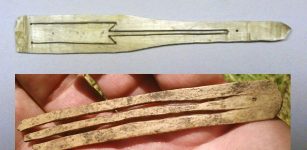 Jew’s Harps: Old Musical Instruments Discovered In Altai Mountains
Archaeology | Jan 9, 2018
Jew’s Harps: Old Musical Instruments Discovered In Altai Mountains
Archaeology | Jan 9, 2018 -
 Bandelier National Monument: Unusual Ancient Ruins Of Pueblo People In The Southwest
Civilizations | Jun 30, 2016
Bandelier National Monument: Unusual Ancient Ruins Of Pueblo People In The Southwest
Civilizations | Jun 30, 2016 -
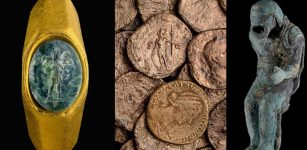 Magnificent Underwater Treasure Recovered From Two Ancient Shipwrecks Off The Coast Of Caesarea
Archaeology | Dec 28, 2021
Magnificent Underwater Treasure Recovered From Two Ancient Shipwrecks Off The Coast Of Caesarea
Archaeology | Dec 28, 2021 -
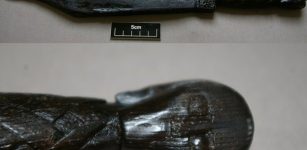 Extraordinary 1,000-Year-Old Viking Sword Discovered In Cork, Ireland
Archaeology | Sep 29, 2017
Extraordinary 1,000-Year-Old Viking Sword Discovered In Cork, Ireland
Archaeology | Sep 29, 2017 -
 Climate Change Behind Early Human Migration To The Americas At Key Intervals – Scientists Say
Archaeology | Feb 17, 2023
Climate Change Behind Early Human Migration To The Americas At Key Intervals – Scientists Say
Archaeology | Feb 17, 2023 -
 Controversial Atacama Skeleton Is Not An Alien – DNA Study Reveals
Archaeology | Mar 23, 2018
Controversial Atacama Skeleton Is Not An Alien – DNA Study Reveals
Archaeology | Mar 23, 2018 -
 Neanderthals: How A Carnivore Diet May Have Led To Their Demise
Featured Stories | Nov 7, 2022
Neanderthals: How A Carnivore Diet May Have Led To Their Demise
Featured Stories | Nov 7, 2022 -
 Munkholmen: Island With Intriguing Yet Dark And Scary History
Featured Stories | Aug 25, 2023
Munkholmen: Island With Intriguing Yet Dark And Scary History
Featured Stories | Aug 25, 2023 -
 Aboriginal Underwater Sites Off The Coast Of Australia – Discovered
Archaeology | Jul 2, 2020
Aboriginal Underwater Sites Off The Coast Of Australia – Discovered
Archaeology | Jul 2, 2020 -
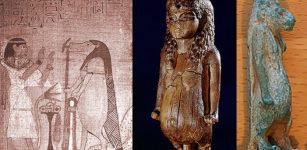 Taweret – Powerful Egyptian Hippopotamus ‘Household Goddess’ Guarded Childbirth, House, Sleep And Dispelled Evil Forces
Egyptian Mythology | Jul 16, 2018
Taweret – Powerful Egyptian Hippopotamus ‘Household Goddess’ Guarded Childbirth, House, Sleep And Dispelled Evil Forces
Egyptian Mythology | Jul 16, 2018 -
 Ptolemaic Granite Sarcophagus Found In Alexandria, Egypt
Archaeology | Jul 6, 2018
Ptolemaic Granite Sarcophagus Found In Alexandria, Egypt
Archaeology | Jul 6, 2018 -
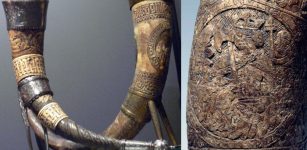 Ancient Icelandic Drinking Horn Reveals An Interesting Story About Saint-King Olaf
Ancient Traditions And Customs | Mar 29, 2017
Ancient Icelandic Drinking Horn Reveals An Interesting Story About Saint-King Olaf
Ancient Traditions And Customs | Mar 29, 2017 -
 Mysterious And Unexplained Encounter With Unusual Tiny Beings In Italy – A Strange Connection – Part 2
Featured Stories | Jan 18, 2022
Mysterious And Unexplained Encounter With Unusual Tiny Beings In Italy – A Strange Connection – Part 2
Featured Stories | Jan 18, 2022 -
 Mystery Of Doppelgangers And Spirit Doubles – From Ancient To Modern Times
Featured Stories | Feb 28, 2022
Mystery Of Doppelgangers And Spirit Doubles – From Ancient To Modern Times
Featured Stories | Feb 28, 2022 -
 Genes And Languages: Development Of Pre-Incan Culture In Central Andes
News | Oct 26, 2020
Genes And Languages: Development Of Pre-Incan Culture In Central Andes
News | Oct 26, 2020 -
 Unexplained Mystery Of The Untraceable Stone-Throwers – Strangeness In North America, Belgium And Indonesia – Part 1
Featured Stories | Nov 11, 2019
Unexplained Mystery Of The Untraceable Stone-Throwers – Strangeness In North America, Belgium And Indonesia – Part 1
Featured Stories | Nov 11, 2019 -
 Skeleton Of Last Trojan Discovered – Ancient City Of Troy May Have Been A Religious Sanctuary – Archaeologists Say
Archaeology | Sep 21, 2018
Skeleton Of Last Trojan Discovered – Ancient City Of Troy May Have Been A Religious Sanctuary – Archaeologists Say
Archaeology | Sep 21, 2018 -
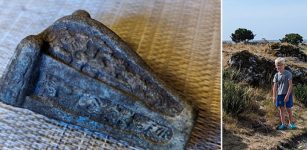 8-Year-Old Boy Finds Unusual Viking Age Artifact On Gotland Island, Sweden
Archaeology | Sep 18, 2023
8-Year-Old Boy Finds Unusual Viking Age Artifact On Gotland Island, Sweden
Archaeology | Sep 18, 2023 -
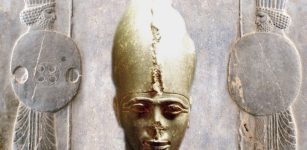 Pharaoh Psamtik III’s Deadly Encounter With Cambyses II Of Persia Ended The 26th Dynasty Of Egypt
Featured Stories | Apr 16, 2021
Pharaoh Psamtik III’s Deadly Encounter With Cambyses II Of Persia Ended The 26th Dynasty Of Egypt
Featured Stories | Apr 16, 2021 -
 Mystery Of The First Dinosaurs Deepens – Is The Supercontinent Gondwana The Answer?
Paleontology | Jan 24, 2025
Mystery Of The First Dinosaurs Deepens – Is The Supercontinent Gondwana The Answer?
Paleontology | Jan 24, 2025


